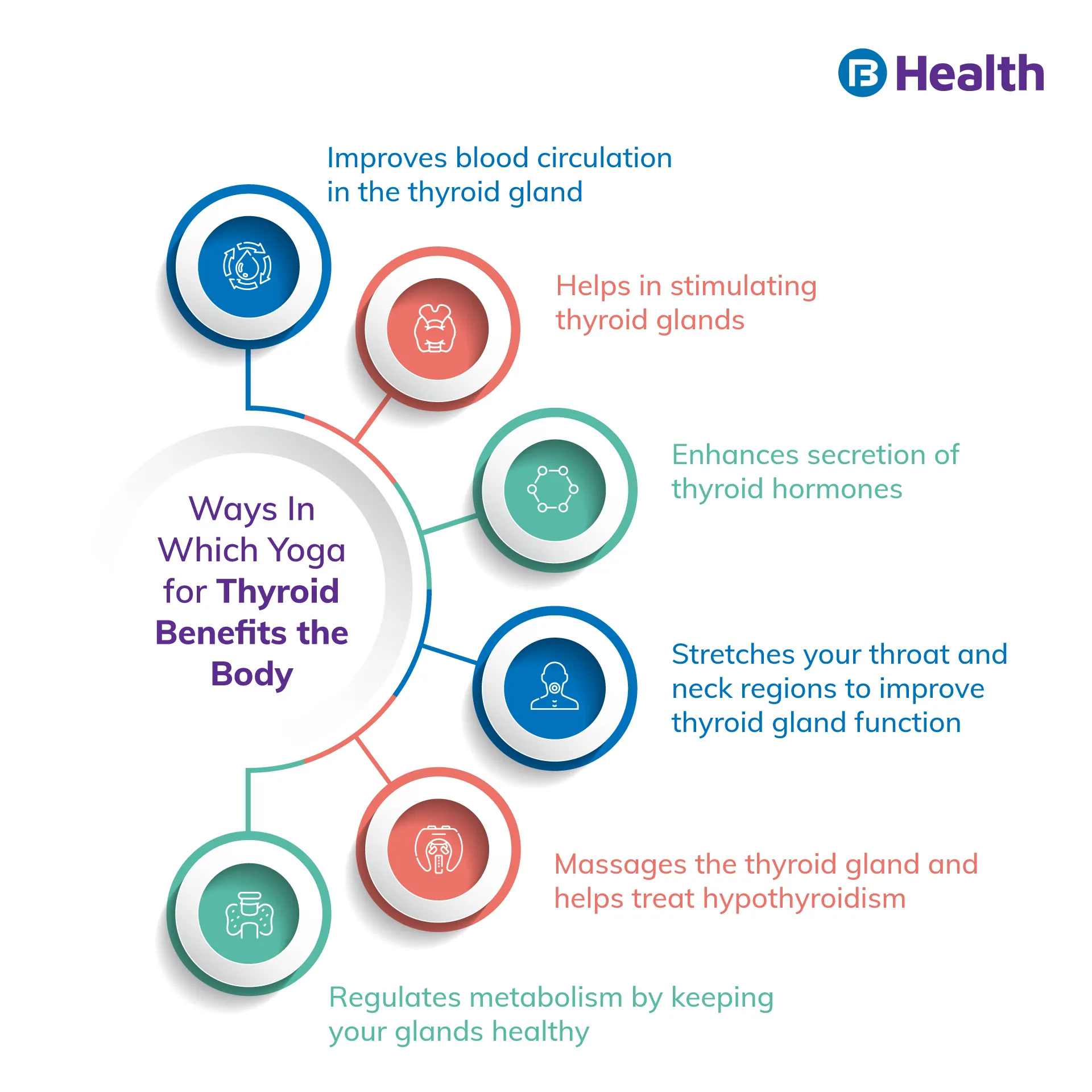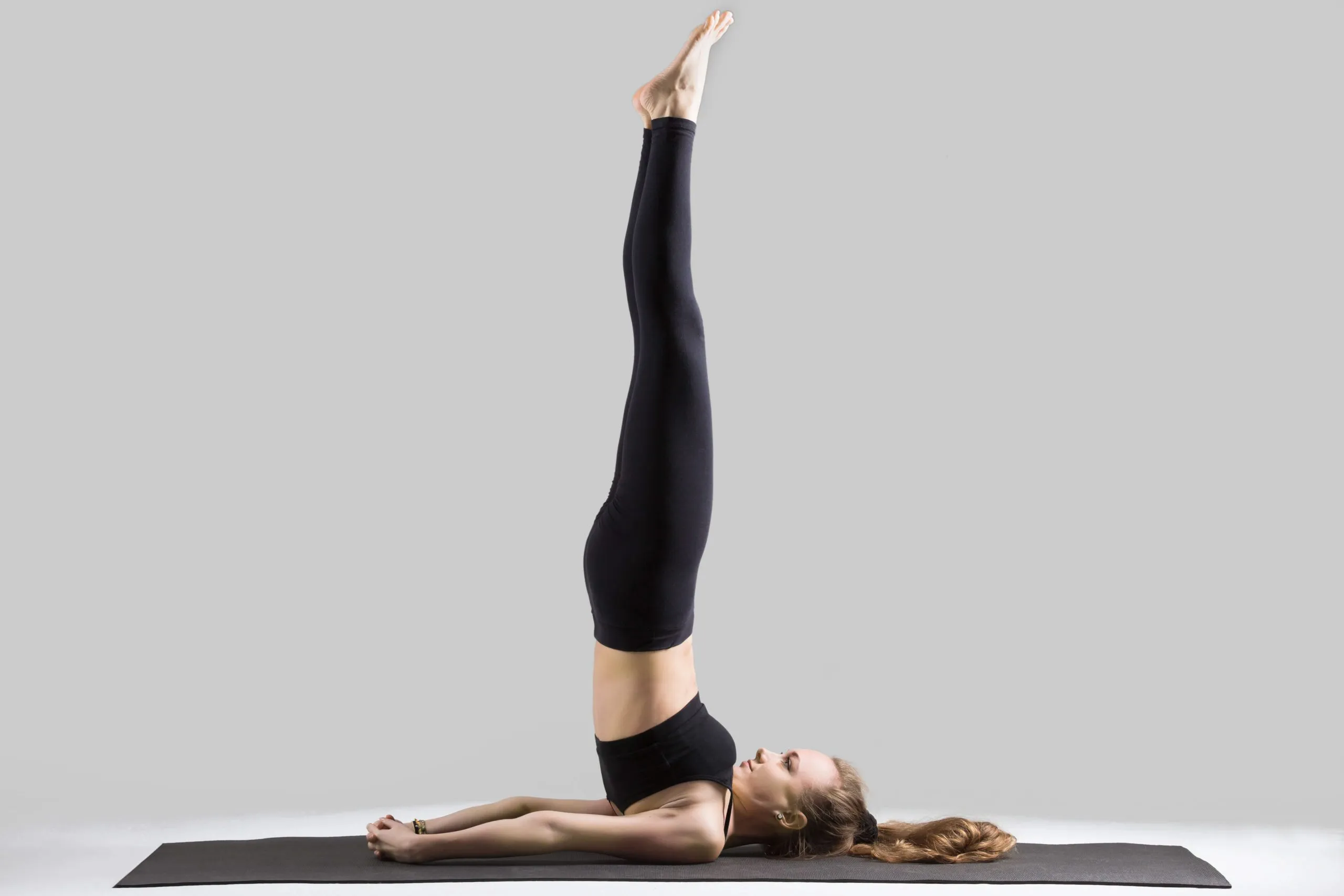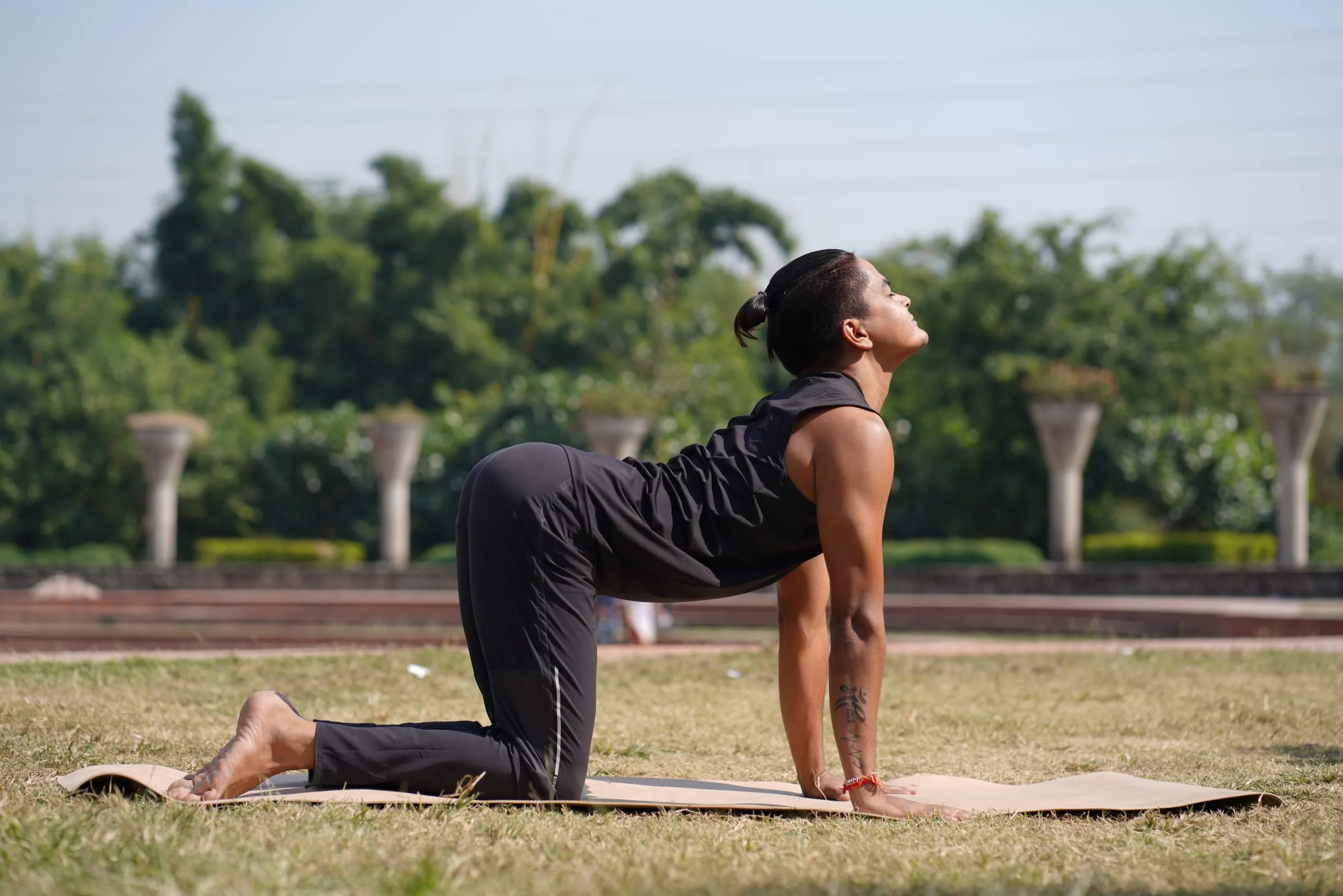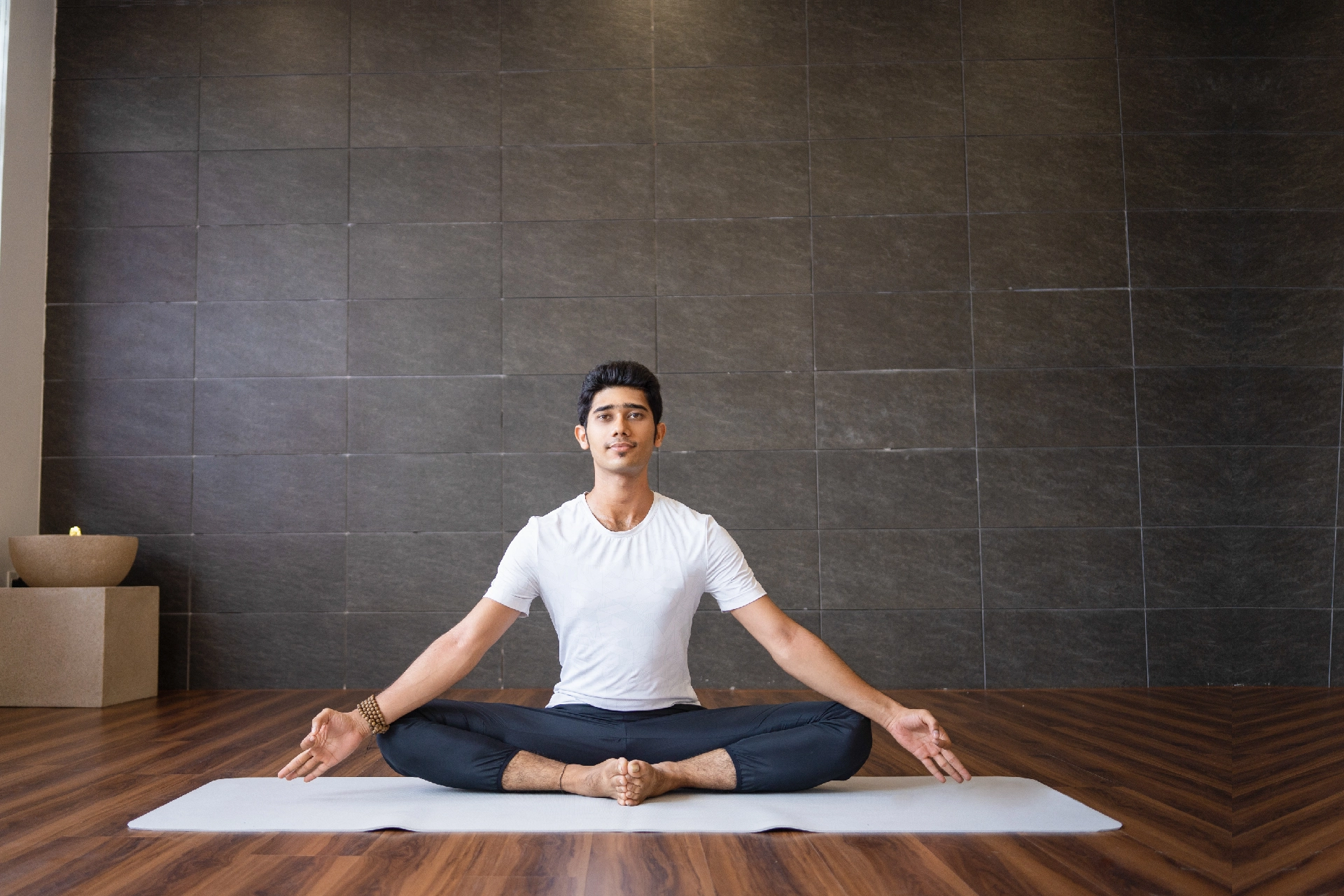Clinical Psychologist | 6 min read
Yoga for Thyroid: 3 Poses to Improve Thyroid Health
Medically reviewed by
Table of Content
Key Takeaways
- Practice yoga to manage thyroid symptoms better
- Remember that yoga doesn’t cure thyroid, but works alongside medication
- Beginner-friendly yoga poses for thyroid include fish pose and shoulder stand
In 2014 it was found that 42 million Indians suffer from thyroid. Moreover, the prevalence of thyroid in India is significantly higher than in other parts of the world such as the US and UK. So, it is safe to assume that a significant number of Indians suffer from thyroid disorder today. The fact that it is also hereditary only complicates matters further.
Of all the thyroid disorders, hypothyroidism is most commonly prevalent in India, with 1 in 10 people suffering from it. So, if you notice symptoms such as fatigue, unexpected weight gain, sensitivity to cold temperatures, pain/weakness in joints, dry and itchy skin, sudden hair fall, or trouble with concentrating and remembering things, consult a doctor right away. He/she will order blood tests to confirm whether or not you have thyroid and prescribe a course of treatment accordingly.
Typical Course of Thyroid Treatment
Whether you have an under-active or over-active thyroid, most often doctors prescribe medication that either restricts the production of hormones by the thyroid gland or supplements it. In rare cases, such as when a patient is pregnant, can’t take certain oral medication and has complications, doctors may recommend surgery. However, for most part oral medication is prescribed.
In addition to this, exercising is recommended by medical practitioners. It not only alleviates stress—a thyroid trigger—but also helps with muscle aches, stiffness, weight loss and joint pain. As a thumb rule, doctors recommend that you do low-impact exercise to begin with, especially if you have joint or body pain. An excellent low-impact option is yoga. Take a look at how you can improve thyroid heath with yoga.
Also Read: Best Food for Thyroid
Can Yoga Cure Thyroid permanently?
Yoga, or any form of exercise, is a supplementary treatment. This means that while yoga can alleviate symptoms associated with thyroid, such as stress or aches and pains, it doesn’t serve as a substitute for medication. Studies have proven that yoga can help improve thyroid function to a certain extent, but can yoga cure thyroid permanently? The answer is no.
Also Read: Complete Guide on ThyroidYoga Poses to Improve Thyroid Health
When you are looking to improve thyroid heath with yoga, remember to ease into the poses or asanas, especially if your haven’t tried yoga before. Start with one asana and then expand your routine to include all of them over the course of a few weeks.
Sarvangasana or shoulder stand
This asana is an essential component of yoga for thyroid as it works on the endocrine system, of which the thyroid gland is an important part. It is believed that this asana encourages blood flow to the thyroid gland, urging it to produce hormones. This is what makes it ideal for hypothyroidism.

- To perform this asana, lie down on your back, with your arms and back pressing into the floor and your legs straight in front of you.
- Next, in one continuous, slow motion, lift your legs up to 90 degrees, in such a way that your back is off the floor and in line with your legs. Tuck in your chin and rest your body weight on your shoulders, supported by your neck and head.
- As you do this, feel free to support your back with your palms, with your fingers pointing towards your hips. Try to not bend your legs.
- Release the pose by lowering your back on to the floor and laying your hands by your sides.
- Remember to inhale as you lift your body off the floor and exhale as your return to the starting position.
Matsyasana or fish pose
Of all the yoga poses for thyroid, this pose is considered to be a counter to the shoulder stand. It helps improve blood circulation in the upper half of your body and gives your neck a good stretch. As a result, it is said to stimulate the thyroid gland and help hypothyroidism patients.
- Sit down on the floor with your legs extended before you.
- Lean back and place your forearms on the floor in such a manner that your palm is flat on the floor and your fingers are pointing towards your hips. Your arms must be bent at the elbow, with the portion of your arm from the fingertips to the elbows resting flat on the floor.
- Bring your elbows slightly inwards so as to open your chest.
- Now, arch your upper body as much as possible, allowing your head to drop back, exposing your throat.
- Release the asana by bringing your back, head and neck back to the starting position.
Marjariasana and bitilasana or cat-cow pose
When it comes to yoga for thyroid, this pose is extremely beginner-friendly. Apart from relieving back pain, stretching your spine and working on your digestive tract, this is one of the yoga poses for thyroid that also works on your throat. As a result, it helps your body’s thyroid function.

- Come on to your yoga mat on all fours, such that your knees are in line with your hips and your wrists are directly under your shoulders.
- Place your palms flat on to the mat with your fingers pointing forward.
- Before you begin, ensure that your back is as flat as possible and isn’t arched. Also, make sure that your body weight is centered and equally distributed between your palms and knees. You shouldn’t be leaning forwards or backwards.
- As you inhale, push your stomach downwards, roll your shoulders back, tilt your head back and look upwards. Ensure that you mobilize only your stomach and ribcage. Your buttocks should be in the same position and your arms mustn’t bend.
- As your exhale, do the reverse. Push your stomach and ribcage upwards, to create an arch, lower your head and try to tuck your chin into your chest.
While yoga benefits your body in more ways than one, it is best consult with a doctor before taking up any form of exercise for thyroid disorders. To speak to a specialist, such as an endocrinologist, simply use the Bajaj Finserv Health App. You can book appointments with doctors in your locality, schedule a video consultation, get medicine reminders and even discounts from partner healthcare facilities. Download the app from the app store on your smartphone and explore the Bajaj Finserv Health App’s many benefits today!
References
- https://www.thelancet.com/pdfs/journals/landia/PIIS2213858714702086.pdf
- https://pubmed.ncbi.nlm.nih.gov/27054602/
Disclaimer
Please note that this article is solely meant for informational purposes and Bajaj Finserv Health Limited (“BFHL”) does not shoulder any responsibility of the views/advice/information expressed/given by the writer/reviewer/originator. This article should not be considered as a substitute for any medical advice, diagnosis or treatment. Always consult with your trusted physician/qualified healthcare professional to evaluate your medical condition. The above article has been reviewed by a qualified doctor and BFHL is not responsible for any damages for any information or services provided by any third party.





